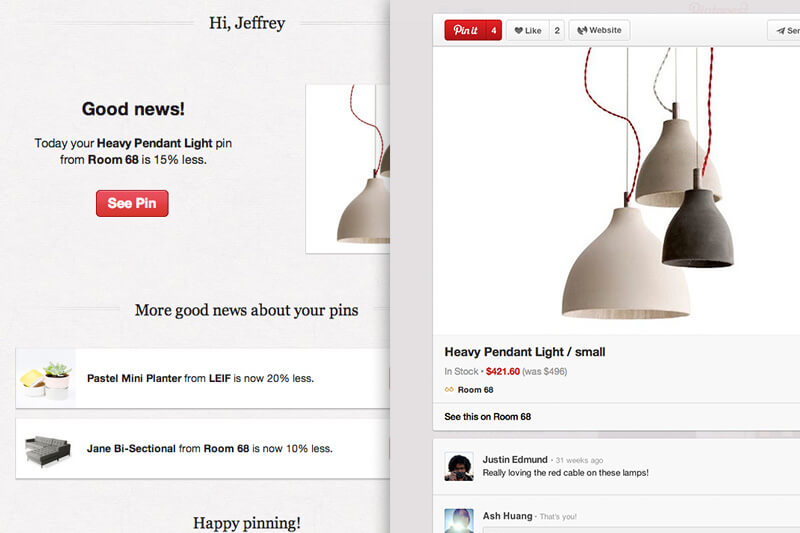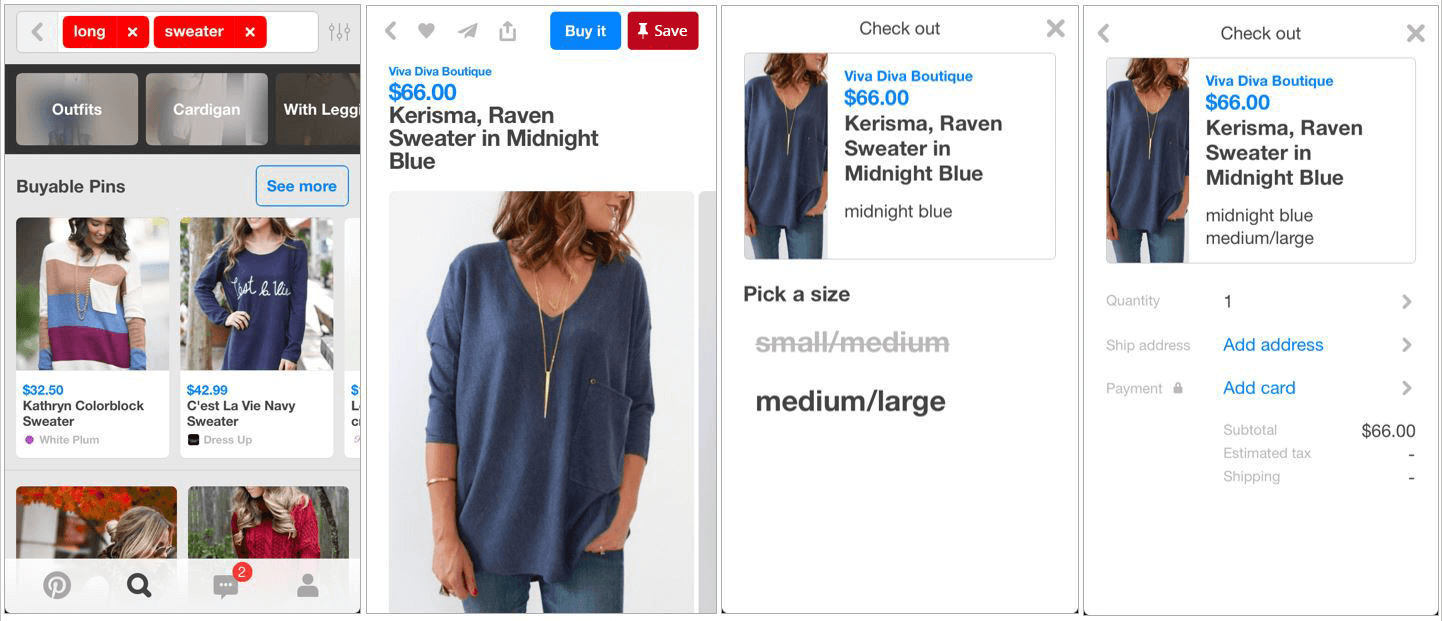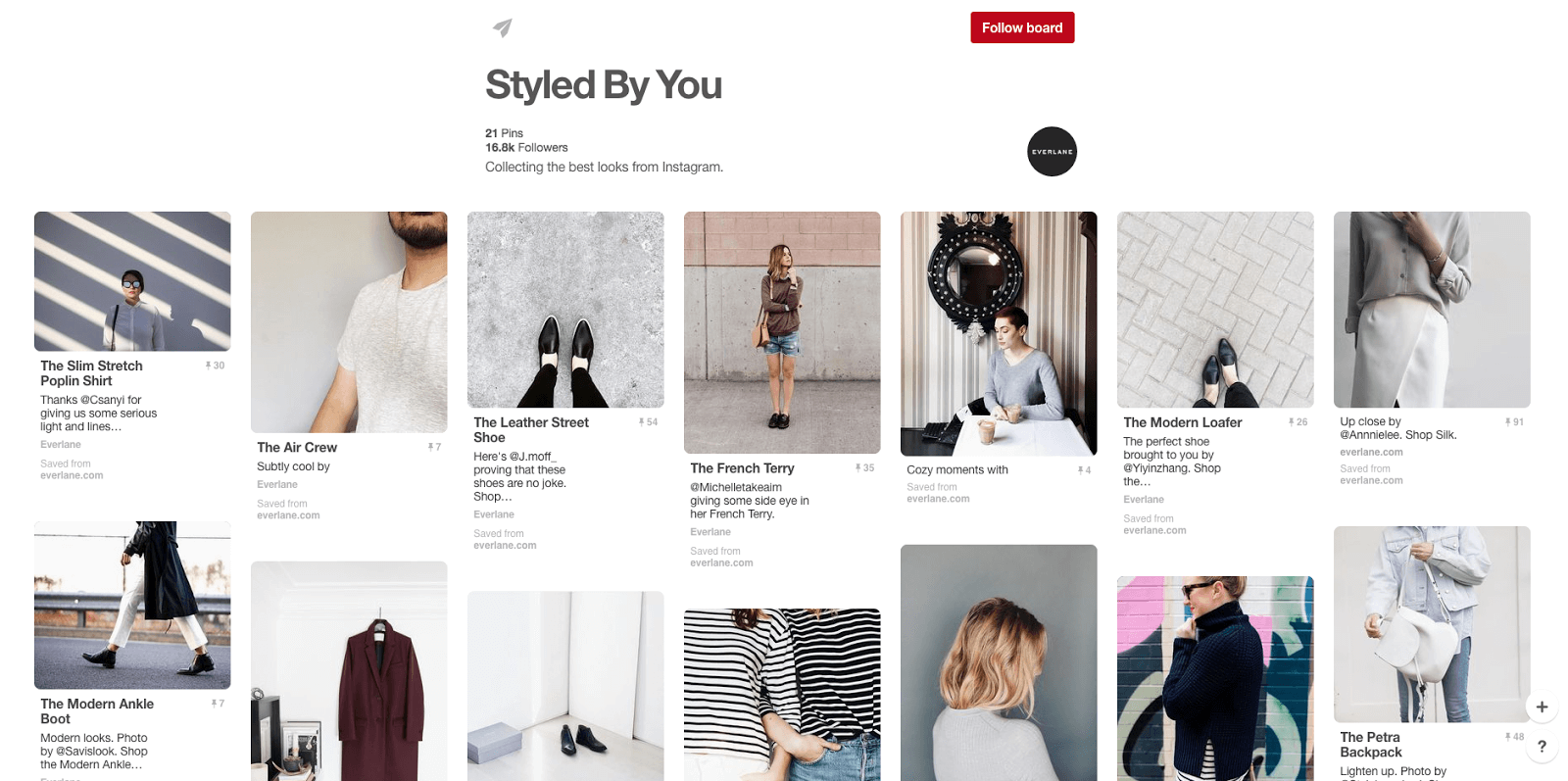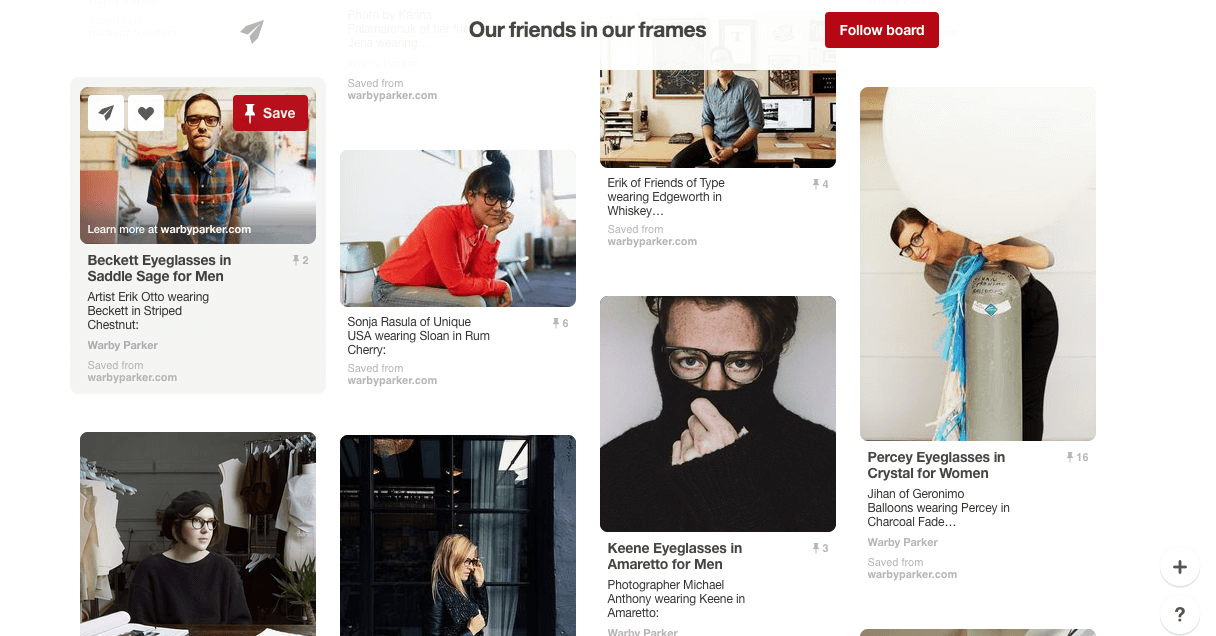The social platform best known for gathering inspiration for everything from recipes to hairstyles to DIY tips and tricks is now being leveraged by eCommerce stores to sell on Pinterest.
You can now connect the dots between Pin and purchase for consumers with Pinterest eCommerce tools such as Product Pins and Buyable Pins.
Pinterest for eCommerce: How It Works
According to a recent study, 55% of Pinterest users shop or locate products on the social platform.
With Pinterest’s stride into the world of eCommerce, users can more easily turn their inspirations into reality with Product Pins and Buyable Pins.
Prior to these Pinterest eCommerce features, the user would have to navigate his or her way to the desired item through further internet searches until they found the relevant product page.
Now, that process is totally eliminated, making for a much more efficient online shopping experience that benefits both store owners and shoppers.
Product Pins
Product Pins direct users to your store’s product page for the item they are viewing on Pinterest.
Once the customer clicks on the Pin, a new browser window opens and brings them to the store’s product page for that item.
For example, if someone clicks on Room 68’s Product Pin of the Heavy Pendant Light shown below, it will bring them to the Heavy Pendant Light product page on Room 68’s website.
The shopper will thereby gain even more exposure to your brand and increases the likelihood that they will browse your website further — something they may not have done otherwise.

Buyable Pins
Buyable Pins all but turn Pinterest into an online store by allowing users to purchase items directly from within the Pinterest platform.
Users can save an item that they intend to purchase, add it to their cart, and continue to browse until they are ready to checkout.
They can even shop from different retailers, yet still be able to add all items into one single cart.

Pinterest eCommerce Benefits for Stores
Pinterest’s move into eCommerce is long-awaited by store owners, as it provides another opportunity to expand their brand visibility, and ultimately stream in more revenue.
One of the biggest pluses for retailers selling on Pinterest is that the platform does not charge a fee for utilizing these social commerce tools.
The store receives 100% of the sales generated, just as if the items were being purchased directly from their online store.
Furthermore, Pinterest users are a largely untapped resource for eCommerce merchandising.
Enhancing Pinterest to include eCommerce is a long-awaited feature for its frequent users. How many people have looked at their Pinterest board and said, “I wish I could buy that right now!”?
Pinterest has a huge audience with 100 million active users to date. That audience is furthermore extremely relevant for online retailers, as Pinterest users spend an average of $123.50 per order from the platform.
If even half of those users pinned items that they were going to buy, imagine the spike in traffic and sales for your company.
Why Your Store Should Sell On Pinterest
Pinterest as a social commerce channel fuels business for online stores. How does it do this? Let’s take a look:
- Their average order value is higher than any other social platform, with a minimum purchase order of $50
- 2 million individuals pin Product Pins each and every day–that is 20x more people than there are daily shoppers at the Mall of America!
- 93% percent of Pinterest users use the platform to plan their purchase
Brands like Everlane and Warby Parker use user-generated customer photos to make the most of their presence on Pinterest.
Their pin boards dedicated to user-generated content highlight their respective brand personalities through customer experiences.
They furthermore increase visibility and build relationships with customers by giving credit to clients who took those photos.
Everlane’s Styled By You board features Everlane customers in the outfits they put together, adding another layer of inspiration for their followers.

Warby Parker’s Our Friends In Frames board shows customers wearing Warby Parker glasses in varying styles and environments to emphasize the wide-reaching nature of their eCommerce brand.

Conclusion
Online stores leveraging a Pinterest marketing strategy to increase eCommerce sales and traffic to their brand are early adopters in the transformative social commerce landscape, bridging the gap between product discovery and purchase.



